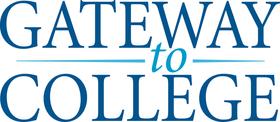School Highlights
Erie Community College serves 12,440 students (42% of students are full-time).
The college's student-teacher ratio of 11:1 is lower than the state community college average of 13:1.
Minority enrollment is 49% of the student body (majority Black), which is less than the state average of 62%.
Quick Facts (2025-26)
- Enrollment: 12,440 students
- In-state tuition: $4,888
- Out-state tuition: $9,183
- Acceptance Rate: 25%
- Student-teacher ratio: 11:1
- Minority enrollment: 49%
- Source: Integrated Postsecondary Education Data System (IPEDS)
Top Rankings
Erie Community College ranks among the top 20% of public schools in New York for:
Category
Attribute
Selectivity
Community Size
Debt For Students
School Overview
The teacher population of 1,136 teachers has stayed relatively flat over five years.
Erie Community College
(NY) Community College Avg.
Carnegie Classification
Associate's Colleges: Mixed Transfer/Career & Technical-Mixed Traditional/Nontraditional
Baccalaureate/Associate's Colleges: Mixed Baccalaureate/Associate's
Institution Level
At least 2 but less than 4 years
At least 2 but less than 4 years
Institution Control
Public
Private not-for-profit
Total Faculty
1,136 staff
159 staff
School Calendar
Student Body
The student population of Erie Community College has grown by 24% over five years.
The student-teacher ratio of 11:1 has increased from 7:1 over five years.
The Erie Community College diversity score of 0.68 is less than the state average of 0.76. The school's diversity has grown by 13% over five years.
Total Enrollment
12,440 students
1,129 students
Student-Teacher Ratio
11:1
13:1
# Full-Time Students
5,285 students
528 students
# Part-Time Students
7,155 students
601 students
# Enrollment Undergraduate
124 students
357 students
# Full-Time Undergraduate Students
5,285 students
519 students
# Full-Time Graduate Students
n/a
44 students
# Part-Time Undergraduate Students
7,155 students
850 students
# Part-Time Graduate Students
n/a
41 students
Total Dormitory Capacity
60 students
382 students
% American Indian/Alaskan
n/a
n/a
% Asian
6%
8%
% Hispanic
7%
23%
% Black
16%
18%
% White
51%
38%
% Hawaiian
n/a
2%
% Two or more races
3%
3%
% Non Resident races
1%
3%
% Unknown races
16%
5%
Diversity Score
0.68
0.76
College Completion Rate (Students who graduate in less than 4 years)
24%
33%
College Completion Rate (Students who graduate in 4 years or more than 4 years)
n/a
40%
Average Graduate Earnings (10 Years)
$35,600
$35,200
Tuition and Acceptance Rate
The public in-state tuition of $4,888 is less than the state average of $5,902. The in-state tuition has declined by 14% over four years.
The public out-state tuition of $9,183 is less than the state average of $10,404. The out-state tuition has declined by 14% over four years.
In-State Tuition Fees
$4,888
$5,902
Out-State Tuition Fees
$9,183
$10,404
% Students Receiving Some Financial Aid
73%
88%
Median Debt for Graduates
$9,465
$13,841
Median Debt for Dropouts
$5,250
$5,500
Acceptance Rate
25%
74%
SAT Reading
n/a
475
SAT Math
n/a
505
SAT Writing
n/a
485
ACT Composite
n/a
20
ACT English
n/a
18
ACT Math
n/a
20
Source: 2024 (or latest year available) Integrated Postsecondary Education Data System (IPEDS)
School Notes
- School Mascot: Wild Boars
- Sample of notable school alumni/alumnae:
- John Doe, Nobel Laureate -
Frequently Asked Questions
How much does Erie Community College cost?
Erie Community College's tuition is approximately $4,888 for In-State students and $9,183 for Out-State students.
What is the acceptance rate of Erie Community College?
The acceptance rate of Erie Community College is 25%, which is lower than the state average of 74%. Erie Community College's acceptance rate is ranked among the top community colleges in New York with low acceptance rates.
Who are famous alumni from Erie Community College?
Erie Community College famous alumni include: John Doe, Nobel Laureate.
What is Erie Community College's ranking?
Erie Community College ranks among the top 20% of community college in New York for: Lowest acceptance rates, Largest student body and Least debt for graduating students.
In what neighborhood is Erie Community College located?
Erie Community College is located in the Downtown neighborhood of Buffalo, NY. There are 1 other community '.college.' located in Downtown.
Recent Articles

Community College Success Rates 2025: Outcomes & Trends
Updated 2025 analysis of community college success rates, completion, transfer, costs, enrollment, and strategies that shape student outcomes.

Community Colleges in 2025: Combating Stereotypes with Impact
Updated insights on how community colleges are dispelling myths, growing enrollment, and expanding pathways in 2025.

2025 FAFSA Changes Explained for Community College Students
A comprehensive guide to 2025 FAFSA changes, what community college students must know, new eligibility rules, timelines, and tips to maximize federal aid.










